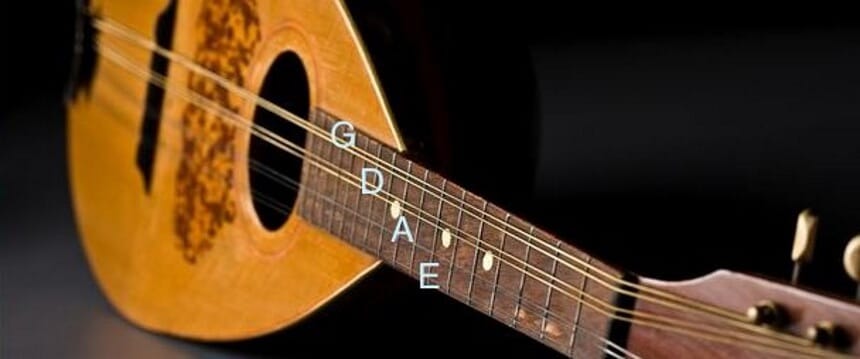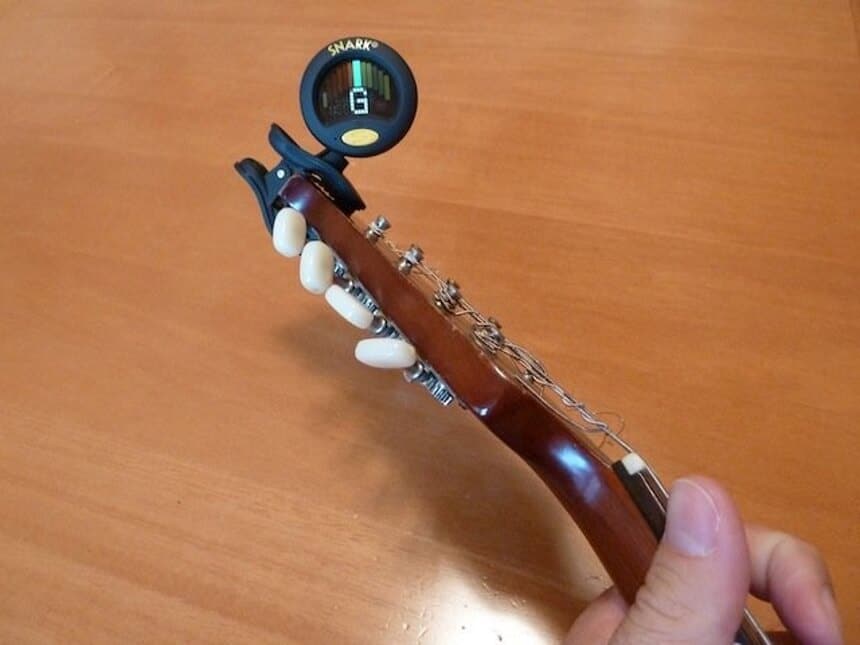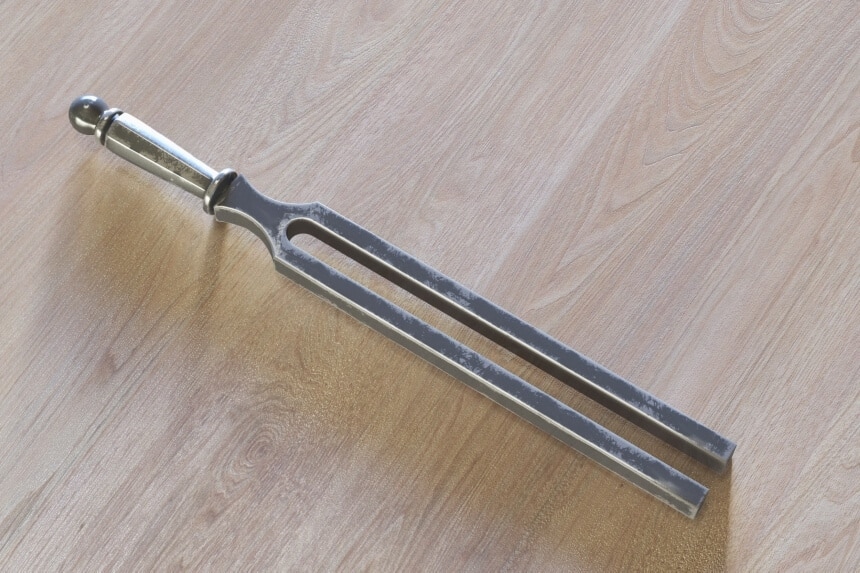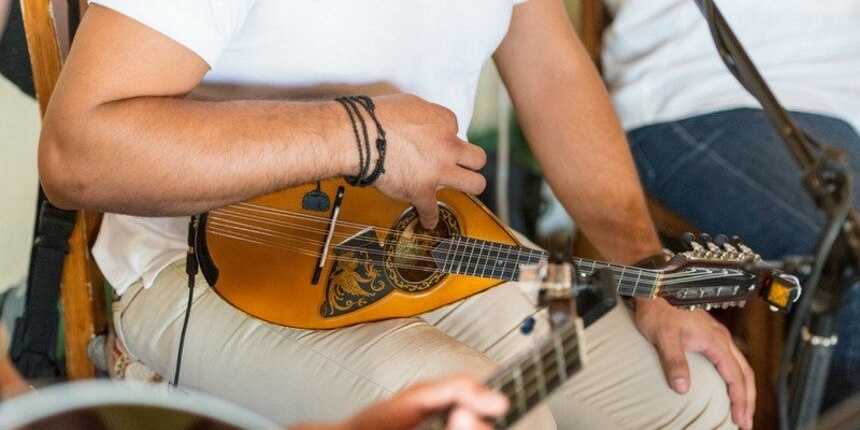If you are taking up the mandolin then it is vital that you know how to tune a mandolin first and foremost. The mandolin can actually go out of tune pretty easily, especially as it has 8 strings playing four different pitches. The mandolin is a unique and fun instrument to learn, but it needs a bit of maintenance, too.
In this guide, we’re exploring all aspects of tuning a mandolin so that you can get it right every time with ease, and minimize the time tuning so you can maximize the time playing and learning your new instrument.
There are some basics of tuning that you should know about before you even attempt the tuning. If you’ve just bought your very first mandolin, it is a good idea to get used to some of the basics first.
Firstly, you need to know if the mandolin is in tune or not. Over time, you will get very good at knowing if it is in tune. If you know any songs, you can play these to see if they sound right.
Some tuning apps will give you a reference tone, and you can use this to check each string individually. Our advice is to get the tuning roughly in the ballpark first, as this will help you to fine-tune.
 It’s not always obvious which tuning peg is for which string. There are eight strings, and eight tuning pegs.
It’s not always obvious which tuning peg is for which string. There are eight strings, and eight tuning pegs.
Most mandolins are the same. They have tuners for the G strings and the D strings on the headstock end closest to you. The A and E strings are on the headstock side that is facing the floor.
We recommend that you work your way around the instrument in a clockwise way and tune all 8 strings.
When you do tune a mandolin, it is important that you tune the strings individually, and then in pairs. This means that once you have tuned a string, check that the pitch is the same as the string it is “paired” with. Effectively, the mandolin has four sets of two identical strings to give a thicker tone.
There are numerous types of electronic tuner including handheld tuners that can work with a mandolin.
These tuners all tend to work in a similar way, they have a meter display. This meter will swing to the left when the string needs to be tightened or “tuned up” and right if it is sharp and needs to be loosened “tuned down”.
Most modern tuners are chromatic Trusted Source Electronic tuner - Wikipedia In music, an electronic tuner is a device that detects and displays the pitch of musical notes played on a musical instrument. en.wikipedia.org , using the chromatic scale. They will detect the pitch of the string you are trying to tune (as long as it is not too far out) and you can work from there.
Many of the best mandolins come as bundles with accessories, and these may include electronic tuners.
 One of the most popular types of tuner is the clip-on tuner. The meter usually fits into a small screen, and the tuner clips onto the end of your headstock. This makes it easier for you to use both of your hands while you are tuning. You need one to move the peg and one to keep plucking the string, so it definitely helps to have a hands-free tuner.
One of the most popular types of tuner is the clip-on tuner. The meter usually fits into a small screen, and the tuner clips onto the end of your headstock. This makes it easier for you to use both of your hands while you are tuning. You need one to move the peg and one to keep plucking the string, so it definitely helps to have a hands-free tuner.
Many of the best clip-on tuners light up so that you can see them in dark situations, such as if you are playing a concert.
It’s important that you get a tuner that says it is capable of other instruments such as banjo and, of course, mandolin.
Online tuners are usually a little different. They might not use your microphone at all.
Instead, an online mandolin tuner will give you a reference tone, showing you what each of the strings should sound like. You can then use this to tune your instrument.
If you don’t have a very good ear for pitch then this might be a struggle still. It certainly takes a little bit of getting used to.
If you use an electric mandolin, you won’t be able to plug it into an app, like you might with an electronic tuner. This means it might not be quite as accurate.
 A tuning fork removes any reliance on technology. You use the fork as a reference for the pitch of the string. For a mandolin, a tuning fork that produces a “E” is most useful. This means you can tune it to your E string.
A tuning fork removes any reliance on technology. You use the fork as a reference for the pitch of the string. For a mandolin, a tuning fork that produces a “E” is most useful. This means you can tune it to your E string.
But that’s only one string…
Luckily, the strings are all related. From one string you can tune all of the others, this is the act of tuning a mandolin to itself, and means you only need a tuning fork.
To actually use the tuning fork, you simply need to hit it against a hard object to get it to generate a tone.
 Tuning an instrument to itself is using one string as a reference point to tune another. This is an important skill. It also means that even if you aren’t using the instrument to play alongside others then you can at least make sure it is in tune with itself.
Tuning an instrument to itself is using one string as a reference point to tune another. This is an important skill. It also means that even if you aren’t using the instrument to play alongside others then you can at least make sure it is in tune with itself.
This is also the way that you use a tuning fork or one reference pitch in order to tune the whole instrument.
Once you’ve tuned the E string, you can use it to generate a tone for the other strings. If you tune the E, and then play the string above (A) at the 7th fret, it should sound the same. If it doesn’t, adjust the A string until it is in tune. Repeat this along the mandolin.
Whether you are looking for how to tune a soprano mandolin or other sizes and varieties, the tuning will be G3–D4–A4–E5. This is the same tuning as a violin.
The G-D-A-E strings are all present on other instruments, so you can use these as reference for tuning.
The G3-D4-A4-E5 all refer to which octave the string should be tuned to. The guitar’s high E is actually E4. It is the correct pitch but one octave Trusted Source Octave - Wikipedia In music, an octave (Latin: octavus: eighth) or perfect octave (sometimes called the diapason) is the interval between one musical pitch and another with double its frequency. en.wikipedia.org down.
E5 can easily be found on a piano. This is a great reference point for your tuning.
Many stringed instruments have different tunings. There are some key differences. It’s fun to experiment with different tunings.
Sawmill tuning (GDGD) – this has a modal sound and makes it a simple instrument as there are only two pitches being used.
Open G (GDGB) – open G is good for playing in a bluesy style.
Irish tuning (GDAD) – a variation from folk instruments in Ireland. Some songs might need you to tune your instrument to this tuning before playing.
It can all sound a little bit confusing when you get started. Knowing how to tune a mandolin can take a little bit of time to get used to, but once you’ve done it a few times then you will probably be used to it. Getting the right tools can help hugely, whether that means a guitar tuner that can be used for mandolin, or even a tuning fork.
Whichever method you end up using most regularly, it’s vital to keep your instrument properly tuned before you practice, and definitely when you play live or with other musicians.
This didn’t really help me because, I am a child and don’t understand how to use a mandolin.